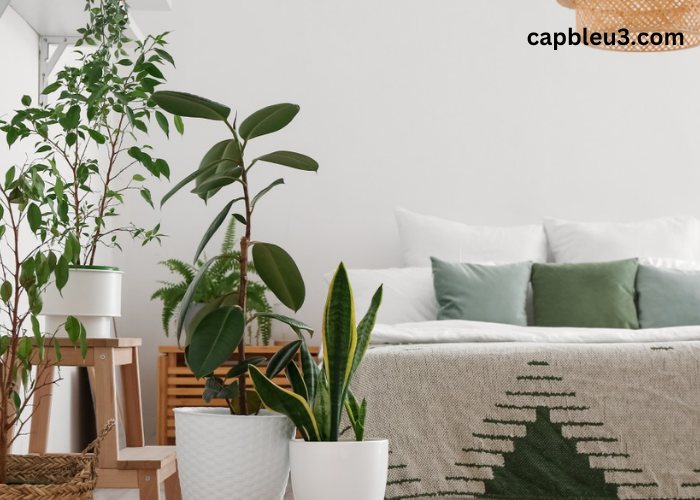
Creating a healthy indoor environment is essential for our well-being. We often overlook the quality of the air we breathe inside our homes, but improving it can significantly impact our health. Poor indoor air quality can lead to allergies, asthma, and other respiratory problems. The good news is, by making a few simple changes, you can create a space where you and your family can breathe easy. Here are some tips to help you achieve a healthier indoor environment.
1. Enhance Ventilation
Proper ventilation is key to maintaining good air quality. It allows fresh air to circulate and helps remove pollutants, allergens, and excess moisture. To improve ventilation:
- Open Windows Regularly: Even in cooler months, consider opening your windows for a few minutes each day to allow fresh air in and minimize indoor air pollutants. If you need assistance with window installation or upgrades, a window installer in Salt Lake City can help ensure your windows function efficiently for optimal ventilation.
- Use Exhaust Fans: In areas prone to moisture buildup, like bathrooms and kitchens, use exhaust fans to remove excess humidity and prevent mold growth.
- Install a Mechanical Ventilation System: If you live in an area with poor outdoor air quality or if opening windows isn’t an option, consider installing a mechanical ventilation system to circulate clean air.
2. Invest in an Air Purifier
Air purifiers can be highly effective in removing airborne pollutants such as dust, pollen, pet dander, and even smoke. When choosing an air purifier, look for one with a HEPA filter, as these filters are known for their ability to trap fine particles. Some air purifiers also come with activated carbon filters, which help absorb odors and chemicals. Make sure to choose a unit that is appropriate for the size of the room you plan to use it in for the best results.
3. Control Humidity Levels
Excess moisture can create a breeding ground for mold, mildew, and dust mites, which can exacerbate allergies and asthma. Keeping indoor humidity levels between 30-50% is ideal for maintaining a healthy living environment. Here are some ways to control humidity:
- Use a Dehumidifier: In damp areas such as basements, a dehumidifier can help reduce moisture and prevent mold growth.
- Fix Leaks Promptly: Check for leaks in plumbing and around windows, and repair them immediately to prevent water damage and mold.
- Dry Wet Areas Quickly: If there’s a spill or water exposure, dry it promptly to avoid creating a moist environment where mold can thrive.
4. Opt for Natural Cleaning Products
Many conventional cleaning products contain harsh chemicals that release volatile organic compounds (VOCs), which can contribute to poor indoor air quality. Opt for natural, non-toxic cleaning products or make your own with ingredients like vinegar, baking soda, and lemon juice. Additionally, always ensure the area is well-ventilated when cleaning, even if you are using eco-friendly products, to help clear any lingering fumes.
5. Keep Indoor Plants
Indoor plants can act as natural air purifiers by absorbing toxins and releasing oxygen. While no plant can replace a good ventilation system or air purifier, adding certain plants can enhance the air quality in your home. Some popular choices for air-purifying plants include:
- Spider Plants: These are great for removing formaldehyde from the air.
- Peace Lilies: Known for filtering out ammonia, benzene, and other toxins.
- Snake Plants: These hardy plants can convert carbon dioxide into oxygen even at night.
Remember to keep the plants healthy and free from mold to avoid introducing new allergens into your space.
6. Reduce Dust Accumulation
Dust can harbor allergens, bacteria, and other contaminants that negatively affect indoor air quality. To keep dust under control:
- Regularly Dust and Vacuum: Use a microfiber cloth for dusting and a vacuum cleaner with a HEPA filter to trap dust particles effectively.
- Wash Bedding and Curtains: Fabrics can trap dust and allergens, so wash them regularly in hot water to kill dust mites.
- Declutter Your Space: The more items you have, the more places there are for dust to accumulate. Simplifying your living space can make cleaning easier and reduce dust buildup.
7. Avoid Synthetic Fragrances
Air fresheners, candles, and scented sprays often contain synthetic fragrances that can release harmful chemicals into the air. Instead of using these products, try natural alternatives like:
- Essential Oil Diffusers: Use essential oils such as eucalyptus, lavender, or lemon for a natural, pleasant scent.
- DIY Potpourri: Create your own potpourri using dried flowers, herbs, and spices.
- Simmer Pot Scents: Simmer citrus peels, cinnamon sticks, and cloves in water for a refreshing natural aroma.
8. Test for Radon and Carbon Monoxide
Radon and carbon monoxide are invisible, odorless gases that can be harmful to your health. Radon can enter your home through cracks in the foundation, while carbon monoxide is produced by combustion appliances like gas stoves and furnaces. It’s essential to:
- Install Detectors: Place radon and carbon monoxide detectors in appropriate areas of your home and check them regularly.
- Test Your Home for Radon: Radon testing kits are available, or you can hire a professional to conduct a test.
In Conclusion
Maintaining a healthier indoor environment doesn’t have to be overwhelming. By taking these steps, you can significantly reduce indoor air pollutants and create a space where you and your family can breathe easier. Incorporating simple habits like improving ventilation, controlling humidity, and using natural products can lead to a healthier, more comfortable home. Prioritizing indoor air quality is an investment in your well-being—so take a deep breath and enjoy the benefits of a fresher, healthier living space.